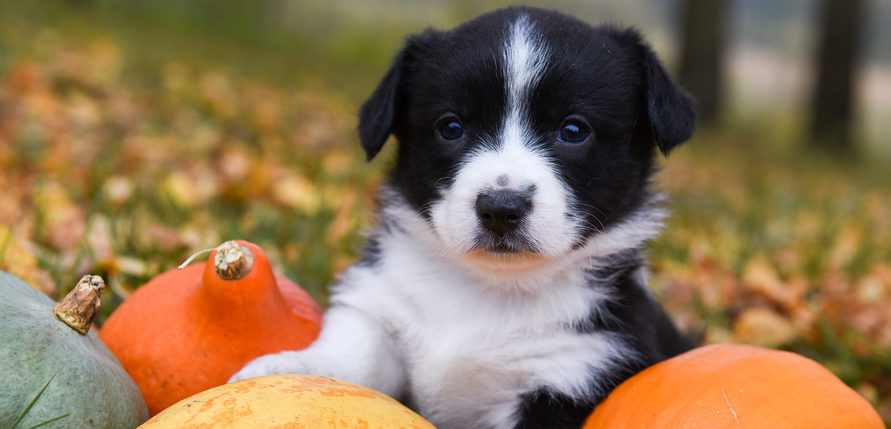While Halloween may be an exciting time for you and your family — costumes, candy, carving — it can be frightening for your dog or cat. From ringing doorbells to monstrous masks, these new sights and sounds can create high anxiety for pets. However, when you follow these simple suggestions, you can give your pet a Fear Free home to enjoy this Halloween.
Costume Paw-ty. Some pets enjoy dressing up, but for others it may be a scary way to spend Halloween. Your pet’s welfare and safety need to be the priority. If you want to dress your pet up for Halloween, do a trial run before October 31. Let them sniff and investigate the costume before slowly dressing them. Give them treats during this “dress rehearsal” to create a positive association with the costume. If your pet seems scared (tail tucked, ears back, trembling, whimpering, growling, pulling to get away, etc.), stop and remove the costume. Pets should be closely supervised when they are wearing costumes, as the costume itself could be a hazard if they chew/ingest parts of it or get tangled up in it.
Dong Dong Ditch-the-Doorbell. Halloween just may be the biggest holiday for doorbells. This may cause anxiety and fear for pets who aren’t used to the incessant noise. To help them feel more at ease this Halloween, try disconnecting your doorbell for the evening and using a motion sensor to alert you when trick-or-treaters are at your door. If necessary, you can keep your dog in their crate or set them up in a back room with treats and toys.
Candy Station. If you’re feeling revolutionary this year, take your treats from the home to the car. To reduce pet stress, cut down on doorbells, knocks, and strangers on your porch and set up a Halloween candy station in the trunk of your car so kids and visitors stop there instead of creating chaos for your pet. Bonus fun: You can have fun with it and decorate your driveway with spooky spectacles for neighbors to enjoy.
Safe Space. If your pet is normally a seven on the skittish scale, Halloween will put them at a fifteen. From scary sights and sounds to creepy costumes, it may be best to give your pet a safe space this Halloween. Set up a comfortable area in a back room with their bed, favorite toys, a blanket, an article of your clothing, and some treats. This will help them feel at ease.
Save the “Boos” for your Friends. When it comes to the Halloween spirit, harmless pranks and scares are all part of the fun — but not for pets. If you’re planning on wearing a frightful costume or mask, or have spooky decorations, make sure you introduce them to your pet well in advance to get them used to your new look and what’s hiding around the corner. To help you can give them treats while you’re dressed in your Halloween attire, so they associate the costume with a reward.
Darting Out the Door. One of the greatest risks at Halloween is having a pet dart outside when you answer the door. Leashes, crates, or pre-segregation in a room can help prevent a heartbreaking loss.
Candy Care. As you prepare candy for the trick-or-treaters, make sure you keep candy away from inquisitive pets. Every year, veterinary emergency clinics are filled with pets who have gorged on Halloween candy. Upset bellies, diarrhea, and vomiting are common after a candy binge. Some candy, like chocolate or candy containing the sweetener xylitol, can be highly toxic to pets.

This article was reviewed/edited by board-certified veterinary behaviorist Dr. Kenneth Martin and/or veterinary technician specialist in behavior Debbie Martin, LVT.
Elanco, and the diagonal bar logo are trademarks of Elanco or its affiliates. © 2019 Elanco
PM-US-19-1410








